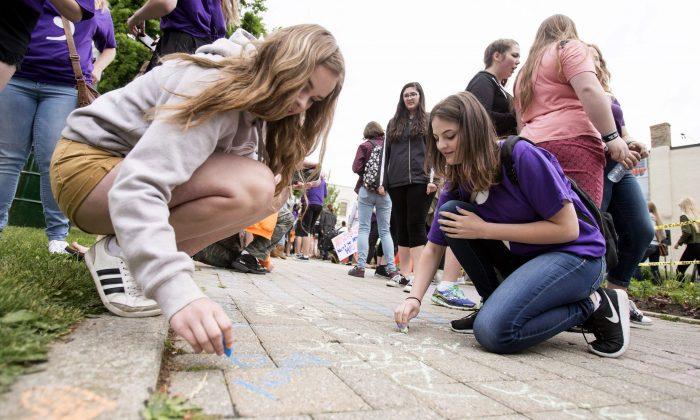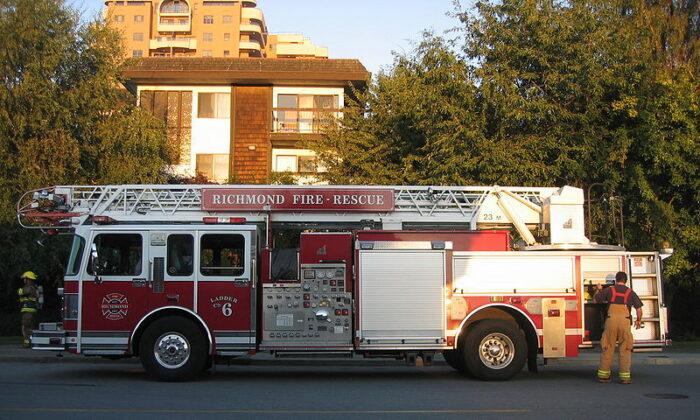The federal government announced last week it is tapping a company that specializes in artificial intelligence and social media monitoring to try and predict potential spikes in suicide, but prevention experts are skeptical that future tragedies can be forecast with success.
Advanced Symbolics Inc. is a market research firm that boasts it was one of the few in the world able to predict Brexit, Donald Trump winning the White House, and Justin Trudeau’s 2015 election win.
As part of the pilot project, the Ottawa-based company will first work together with health officials to define what are “suicide-related behaviours.” Once that is determined, the company will scan random samples of social media from 160,000 public accounts in an effort to detect red flags that a specific area may be headed toward a spate of suicides.
The project is expected to start early next month and Advanced Symbolics has said that it will be looking into previous suicide hot spots, such as in Cape Breton where three middle school students died by suicide within a short time last year.
If it can successfully detect patterns in such suicide clusters, the company will report its findings to the Public Health Agency of Canada (PHAC) and the government will use the information to better understand how to deploy mental health resources before tragedy strikes.
But a youth suicide expert, who worked closely with the Cape Breton community hit by suicide, doubts the data collected from social media research would be able to catch the red flags fast enough to connect the resources with those who are at risk.
“I’m always in awe of the incredible power of big data but I don’t understand how to make the leap from identifying group trends [such as in] elections to individual behaviour, which is suicide,” said Dr. Stan Kutcher, a psychiatry professor at Dalhousie University.
“I cannot reveal details of the Cape Breton case because I can’t, but there was absolutely no way, zero chance, that it could have been predicted which kids were going to die by suicide from the social media messages that those kids were sending because they didn’t send any,” he said.
To avoid breaching anyone’s personal privacy, Advanced Symbolics has said the artificial intelligence program will be looking for overall trends and not individual cases.
Suicidal behaviours highly individual
That approach concerns Kutcher, who questions how the project will effectively prevent suicides if it doesn’t address the individual. He says suicide is a very personal issue and suicidal behaviours are highly individual.“You can’t prevent the death of an individual by finding group trends. If you are able to spot a group trend then it’s not going to help predict which kid is going to die by suicide and which is not,” he said.
Close to 11 Canadians die each day by suicide, and it is the second leading cause of death for those aged 10 to 19, according to PHAC.
Kutcher also notes that the age group with the most deaths by suicide is 50-54, a demographic that is less likely to use social media regularly.
As well, he said that even if the artificial intelligence does detect spates of suicides before they occur, there is no proof that throwing more mental health resources at a specific area at risk has an effect on lowering suicide rates.

Advanced Symbolics will have until June 30 to determine whether it can in fact accurately predict patterns in suicidal behaviours from past cases. If that works out, PHAC will determine whether to go ahead with the surveillance and “market research on the general population of Canada” in the next phase of the project.
Kutcher said he has been around the block enough to know that a lot of suicide prevention research comes with caveats, and when a company or charity is benefiting from the research it can be flawed in their favour without using the appropriate controlled variables that academic research requires.
White was unavailable for comment by press time, but Advanced Symbolics said in an email that it would be looking at controlled variables by also looking at communities that did not see a spike in suicides, which is an important factor in getting fair results, according to Kutcher.
James Coyne, an Emeritus psychology professor at the University of Pennsylvania who wrote over 350 research papers including on topics of big data and suicide, said he doubts looking at social media samples would be able to predict suicide clustering like that in First Nations’ communities in northern Saskatchewan last year, where six deaths by suicide occurred.
“The problem is you could [examine] the past like that but it’s not necessarily generalizable to the future. There’s such a unique set of circumstances that may not quite align themselves again that led up to that clustering in Saskatchewan,” he said.
Coyne worked with a graduate student on a project examining a 2015 study that gathered data from Twitter to see if angry tweets could be connected with increases in heart attacks in counties in the United States. The two tried using the same algorithm to see if an increase in suicides could be connected to the angry tweets.
However, they found the opposite to be true: positive tweets predicted more suicides.
“We had no confidence in those results but it also gave us a lot of doubt about these kinds of big data approaches,” Coyne said.





